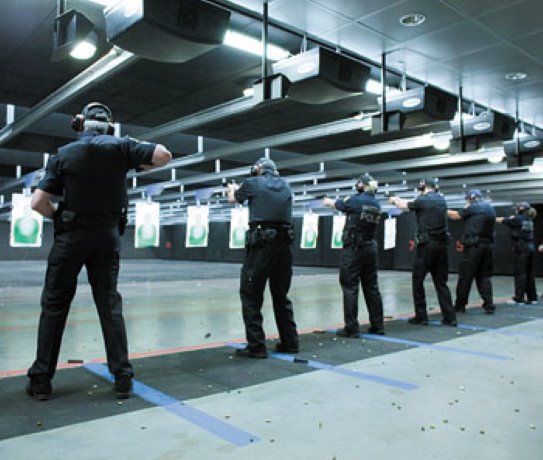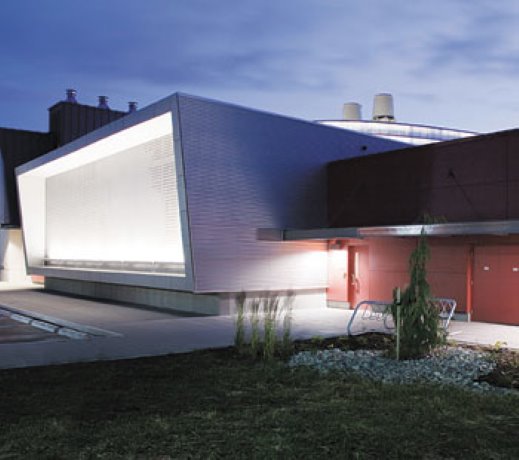D.G.S. Construction Company Ltd., a Surrey, B.C. general contractor is helping the Vancouver Police Department (VPD) realize a long-term goal, with new facilities. Work is wrapping up on the $30 million Property and Forensic Storage Facility at 2010 Glen Drive, near the VCC SkyTrain station.
A Surrey, B.C. general contractor is helping the Vancouver Police Department (VPD) realize a long-term goal, with new facilities.
D.G.S. Construction Company Ltd. is nearing completion of the second phase of a three phase construction project.
Work is wrapping up on the $30 million Property and Forensic Storage Facility at 2010 Glen Drive, near the VCC SkyTrain station.
The new 8,083 square metre storage facility is to be completed by June 2011.
It will provide the department with secure storage for seized property and vehicles, as well as provide three forensic examination bays for vehicles.
D.G.S. Construction is known for building law-related structures, such as the Justice Institute of British Columbia, as well as police stations in Williams Lake, Port Moody and Maple Ridge.
“Our work is mainly institutional,” said D.G.S. Construction partner and project manager Dennis Rossi.
In 2009, the company completed the first phase of the project, a new $20 million tactical training facility, on the same site.
The Force Options Training Facility provides police officers from Vancouver, and other areas, two firing ranges (needed for fire arms qualification), facilities for hand combat and crowd control as well as classrooms for lectures.
DGBK Architects designed both structures.
The firm’s marketing manager, Wade Comer, said the old firing range at 312 Main St., was closed when some staff developed lead poisoning from the poorly-ventilated facility.
A replacement was sought.
“It is a facility for use by Vancouver police and Lower Mainland law enforcement agencies,” he said.
It will feature both a 25-metre and 50-metre indoor target range.
A high-flow ventilation system removes any lead air particulate.
DGBK architects’ Amy Cheung said that Rebanks Pepper Littlewood Architects Inc. designed the ranges. The Toronto-based firm specializes in firing ranges.
The Phase II storage facility is constructed next to the firing range.
Both facilities are designed to be LEED Gold certified.
Rossi said the new storage facility will feature a green roof, but perhaps its most unique feature on the large warehouse-like structure is the use of a metal facade to supplement heating. The SolarWall system is made up of sheets, which use the sun’s energy to heat ventilation air for commercial and industrial buildings.
“It is the first building of this kind that I have constructed,” said Rossi, adding that the mechanical contract is being carried out by MCW Group of Companies.
MCW’s Frank Luskin, said the system works by using solar panels on the south wall, which heats air in a space between the panels and wall.
“There is an air handler at the top of the building, which draws the warm air (into the building),” he said.
The unit reduces heating and ventilation costs, but only works on sunny days.
It is adaptable to any structure, but new to Vancouver.
“This is the first one we have done and I don’t know of any others in Vancouver,” he said.
It is supplemented by a natural gas, water-heating system.
The second part of the phase is the $30 million forensic VPD laboratory.
The City of Vancouver has given its approval, but funding hasn’t yet been found.
The three projects are part of a revamping of VPD facilities.
Currently the police are housed in three buildings. The headquarters are at 312 Main St., and another building is at 2120 Cambie St.
Both are currently for administration, investigations and patrol deployment.
A third facility at 5 East 8th Ave. houses specialty units.
The East 8th Ave and 312 Main sites are owned by the city, while the Cambie site is leased from the Insurance Bureau of B.C.
An interim step, in a long-range plan, is vacating 312 Main St., a 60-year old structure that is described in a 2010 city planning report as in a “crisis” state.
It lacks seismic capability and is costly to operate.
Between April and June 2011, the department will vacate its current headquarters and move to an interim site on Graveley, the old VANOC facilities, owned by the city.
The long-range plan, according to a city document issued last year, stated that a new patrol building and a new headquarters is needed with an estimated cost of about $370 million.
A spokesperson for the city said that no decision had been reached on various alternatives for the vacated 312 Main street facility.
The report outlines several alternatives: rehab the building, sell the site for redevelopment, demolish the structure and rebuild a new police station on site.
A decision will be made by year-end.

VPD tactical training centre











Recent Comments
comments for this post are closed